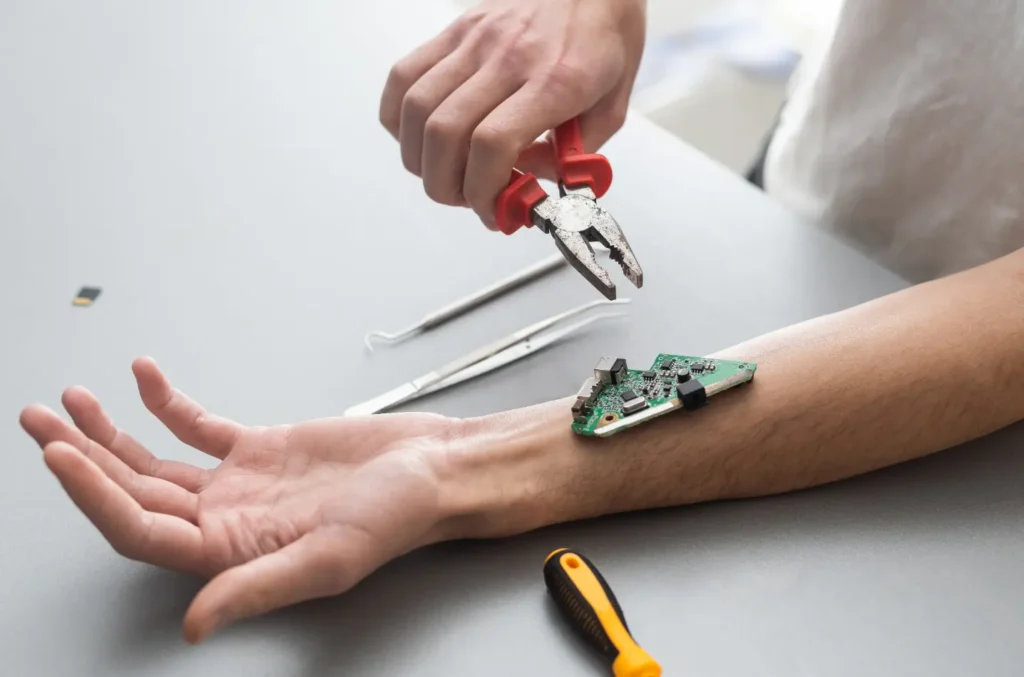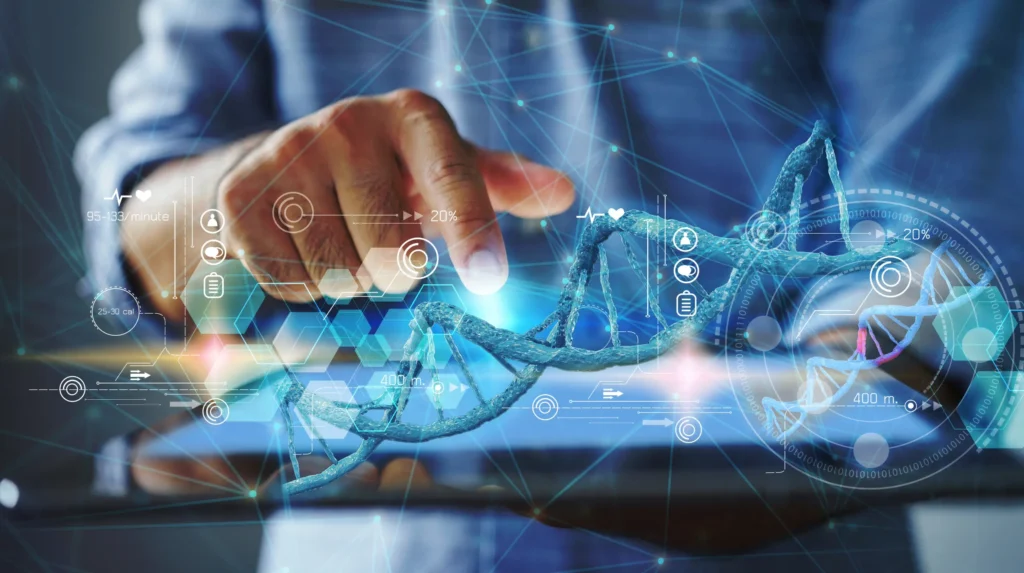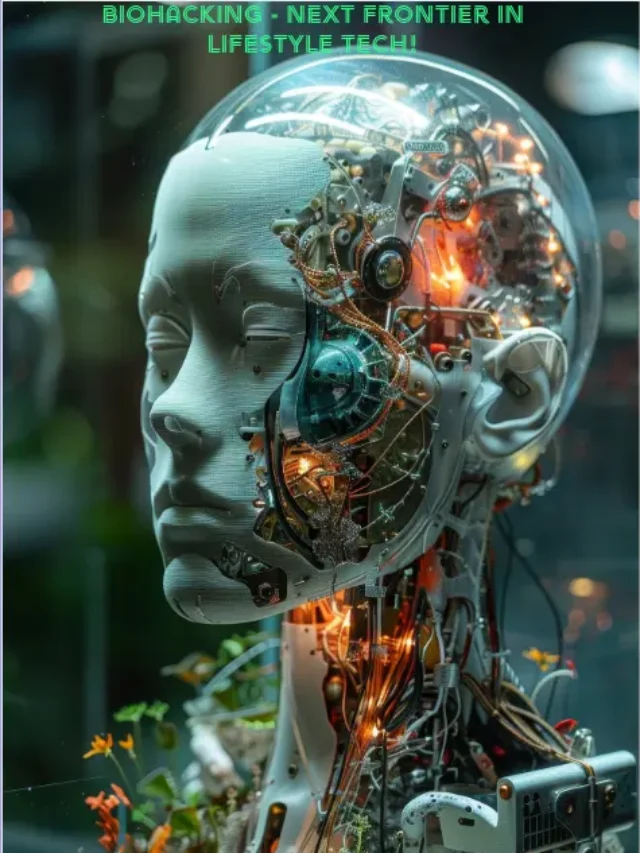Table of Contents:
Top Picks!
Related Stories
What is Biohacking, unlock the secrets of biohacking and discover how DIY biology is revolutionizing lifestyle tech. From optimizing health to enhancing performance, this blog explores the cutting-edge world of biohacking and its potential to shape the future.
Biohacking, once a niche interest among hardcore technophiles and fringe enthusiasts, has rapidly evolved into a mainstream movement. Driven by the desire to push human potential beyond its natural limits, biohacking is a blend of biology, technology, and DIY ethics that empowers individuals to take control of their own biology. From improving cognitive function with nootropics to augmenting the body with implanted devices, biohacking is redefining the boundaries of health, wellness, and human performance.
In this detailed exploration of the biohacking phenomenon, we will delve into what biohacking is, the various techniques used, its implications for health and wellness, and the ethical considerations it raises. Additionally, we’ll examine how biohacking intersects with technology and why it is increasingly popular among tech enthusiasts and health-conscious individuals. #Biohacking #WhatIsBiohacking
Understanding Biohacking: A New Approach to Wellness!

Biohacking is essentially the practice of using science, technology, and self-experimentation to alter one’s biology in pursuit of enhanced physical and mental capabilities. The movement is often seen as a form of self-empowerment, where individuals take their health and performance into their own hands, bypassing traditional medical and scientific institutions.
The Origins of Biohacking
The term “biohacking” is relatively new, but the concept of hacking the body is as old as humanity itself. From ancient practices like fasting and herbal medicine to modern techniques such as genetic engineering, humans have always sought ways to enhance their physical and cognitive abilities. The current biohacking movement, however, is heavily influenced by Silicon Valley’s tech culture, where optimization and disruption are key values. Pioneers like Dave Asprey, the creator of Bulletproof Coffee, have popularized biohacking by advocating for practices that improve cognitive function and energy levels.
Core Concepts and Practices
Biohacking encompasses a wide range of practices, from simple lifestyle changes to advanced technological interventions. Some of the most common biohacking practices include:
Nootropics: Also known as “smart drugs,” nootropics are substances that claim to improve cognitive function, memory, and focus. Popular nootropics include caffeine, L-theanine, and racetams.
Intermittent Fasting: A dietary strategy that alternates between periods of eating and fasting. Proponents believe it can improve metabolism, mental clarity, and longevity.
Genetic Modification: CRISPR and other gene-editing technologies are used by some biohackers to alter their DNA, potentially reducing the risk of disease or enhancing physical traits.
Wearable Devices: Devices like the Oura Ring and WHOOP Strap track sleep, activity, and other biometrics, allowing users to optimize their health and performance.
Implanted Devices: Some biohackers go as far as implanting technology under their skin. These implants can range from RFID chips for unlocking doors to more complex devices that monitor health metrics in real time.
The Intersection of Biohacking &Technology!
Technology is at the heart of the biohacking movement. The convergence of biology and technology has opened up new possibilities for enhancing human capabilities, from brain-computer interfaces to AI-driven health monitoring.
Wearable Technology
Wearable devices are perhaps the most accessible form of biohacking technology. These devices provide real-time data on various aspects of the user’s health, enabling them to make informed decisions about their lifestyle. For example, the Oura Ring tracks sleep patterns, heart rate variability, and body temperature, helping users optimize their sleep and overall well-being. Similarly, WHOOP Strap focuses on recovery, strain, and sleep, providing insights that can improve athletic performance.
Nootropics and Cognitive Enhancement
Nootropics are a key focus within the biohacking community, particularly among those looking to boost mental performance. These substances range from everyday stimulants like caffeine to more specialized compounds like Modafinil, a prescription drug used to treat narcolepsy that is also popular among biohackers for its cognitive-enhancing properties.
While the use of nootropics is not without controversy, many biohackers swear by them as a means to increase productivity, focus, and creativity. The tech industry’s high-pressure environment, where long hours and intense focus are often required, has made nootropics particularly popular among software developers, entrepreneurs, and executives.
Implanted Devices: The Ultimate Biohack
For the most dedicated biohackers, wearable technology is just the beginning. Implanted devices, often referred to as “grinders,” represent the cutting edge of biohacking. These devices are surgically implanted under the skin and can perform a variety of functions, from monitoring vital signs to storing personal data.
One of the most well-known examples of implanted technology is the RFID chip. This tiny device can be used to unlock doors, start a car, or even make payments, all with a simple wave of the hand. While the idea of implanting technology into the body may seem extreme, for many biohackers, it represents the ultimate expression of control over their own biology.
The Ethical and Health Implications of Biohacking!

As biohacking grows in popularity, it raises significant ethical and health-related questions. The movement challenges traditional notions of medicine, health, and what it means to be human.
Ethical Concerns
One of the most pressing ethical concerns surrounding biohacking is the potential for inequality. Access to advanced biohacking technologies, such as genetic modification or implanted devices, is often limited to those with the financial means to afford them. This could create a new form of inequality, where the wealthy are able to enhance their capabilities beyond those of the average person.
Another ethical issue is the potential for coercion. In a competitive world, there could be pressure to adopt biohacking practices to keep up with others, particularly in high-performance environments like tech companies or professional sports. This raises questions about the voluntary nature of biohacking and whether individuals are truly free to choose whether or not to enhance their biology.
Health Risks
Biohacking is not without its risks, particularly when it involves untested or experimental practices. The use of nootropics, for example, can have side effects ranging from insomnia to increased heart rate, and the long-term effects of some substances are not well understood.
Implanted devices also carry risks, including infection, rejection by the body, and the potential for malfunction. In some cases, removing an implanted device can be more complicated and dangerous than the initial implantation.
Moreover, genetic modification, while still largely theoretical in the DIY biohacking community, raises significant health concerns. Editing one’s genes could have unforeseen consequences, potentially leading to new health problems or even impacting future generations.
The Role of Regulation
The rapid growth of the biohacking movement has outpaced regulation, leading to a largely unregulated environment where individuals are free to experiment with their own bodies. This lack of oversight has sparked debate about the need for regulation to protect individuals from harm while allowing for innovation.
Some argue that biohacking should be regulated like any other medical practice, with strict oversight to ensure safety and efficacy. Others believe that regulation would stifle innovation and infringe on personal freedoms. The challenge lies in finding a balance between protecting public health and allowing individuals the freedom to explore new frontiers in biology.
Popular Biohacking Practices and Their Real-World Outcomes!

Biohacking is a diverse field, with practices ranging from the simple and low-tech to the highly complex and experimental. Below are some of the most popular biohacking practices and the real-world outcomes reported by those who engage in them.
Intermittent Fasting
Intermittent fasting has gained popularity as a biohacking technique for weight loss, improved mental clarity, and increased longevity. The practice involves alternating periods of eating and fasting, with common methods including the 16/8 method (16 hours of fasting and 8 hours of eating) and the 5:2 method (eating normally for 5 days and severely restricting calories for 2 days).
Real-World Outcomes: Many people who practice intermittent fasting report weight loss, improved focus, and better energy levels. Some studies suggest that intermittent fasting may have health benefits, including improved insulin sensitivity and reduced inflammation. However, it may not be suitable for everyone, particularly those with certain medical conditions or eating disorders.
Nootropics
Nootropics are substances that claim to enhance cognitive function, memory, and focus. Popular nootropics include natural substances like caffeine and L-theanine, as well as synthetic compounds like Modafinil and racetams.
Real-World Outcomes: Users of nootropics often report increased focus, improved memory, and enhanced productivity. However, the effects can vary widely depending on the individual and the substance used. While some nootropics are backed by scientific research, others have little evidence to support their claims, and long-term safety is a concern for many synthetic compounds.
Genetic Modification
Genetic modification is one of the most controversial forms of biohacking. While still in its early stages, some biohackers are experimenting with gene editing technologies like CRISPR to alter their DNA. Potential applications include reducing the risk of disease, enhancing physical traits, or even increasing intelligence.
Real-World Outcomes: As of now, genetic modification in humans is still largely theoretical and remains a highly experimental and risky endeavor. Most examples of genetic biohacking are found in the lab rather than in real-world practice. The potential for unintended consequences, such as new health problems or ethical dilemmas, is significant.
Implanted Devices
Implanted devices, such as RFID chips and glucose monitors, are becoming increasingly popular among biohackers. These devices are inserted under the skin and can perform a variety of functions, from monitoring health metrics to storing data.
Real-World Outcomes: Biohackers who use implanted devices often report a sense of empowerment and control over their bodies. For example, individuals with implanted glucose monitors can track their blood sugar levels in real time, allowing for more precise management of conditions like diabetes. However, there are also reports of complications, such as infection or device malfunction, highlighting the risks involved.
DIY Biology
DIY biology, or “garage biology,” involves conducting biological experiments outside of traditional lab settings. This can include everything from brewing kombucha to attempting gene editing. The DIY biology movement is closely linked to biohacking and is driven by the same ethos of self-empowerment and experimentation.
Real-World Outcomes: DIY biology has led to a number of innovations, particularly in the areas of fermentation and synthetic biology. However, it also carries significant risks, particularly when it involves unregulated experimentation with genetic materials. The potential for biosecurity issues, such as the accidental release of harmful organisms, is a major concern.
Why Biohacking is Gaining Popularity!

The rise of biohacking can be attributed to several factors, including the increasing availability of technology, the growing interest in personal optimization, and the desire for self-empowerment.
The Appeal of Self-Optimization
In a world where performance and productivity are highly valued, the appeal of self-optimization is strong. Biohacking offers a way to push beyond natural limits, whether by improving cognitive function, increasing physical performance, or enhancing overall well-being. For many, the idea of taking control of their biology is empowering and offers a sense of agency in an increasingly complex and uncertain world.
The Influence of Technology
The rapid advancement of technology has made biohacking more accessible than ever before. Wearable devices, genetic testing kits, and online communities provide biohackers with the tools and knowledge they need to experiment with their own biology. The internet has also played a crucial role in the spread of biohacking, allowing enthusiasts to share information, techniques, and results with a global audience.
The Intersection with Health and Wellness
Biohacking is also gaining traction as part of the broader health and wellness movement. As more people seek to take control of their health, biohacking offers a proactive approach to well-being that goes beyond traditional medicine. Practices like intermittent fasting, mindfulness, and nootropics are seen as ways to optimize not just physical health, but mental and emotional well-being as well.
The Future of Biohacking: Potential and Challenges!

As biohacking continues to grow, it has the potential to revolutionize health and wellness, but it also faces significant challenges.
Potential Benefits
The potential benefits of biohacking are vast. By enabling individuals to take control of their biology, biohacking could lead to significant improvements in health, performance, and quality of life. Advances in genetic modification, for example, could reduce the risk of hereditary diseases, while implanted devices could provide real-time health monitoring that helps prevent illness before it occurs.
Challenges and Risks
However, biohacking also faces significant challenges. The lack of regulation and oversight raises concerns about safety, ethics, and inequality. The potential for unintended consequences, particularly in the areas of genetic modification and implanted devices, is a major concern. Additionally, the commercialization of biohacking could lead to the exploitation of vulnerable individuals or the creation of new forms of inequality.
The Role of the Biohacking Community
The future of biohacking will likely be shaped by the biohacking community itself. As the movement grows, biohackers will need to navigate the complex ethical and practical challenges that arise. This will require a commitment to transparency, safety, and inclusivity, as well as a willingness to engage with broader societal concerns.
Conclusion
Biohacking represents a new frontier in lifestyle technology, offering exciting possibilities for enhancing human capabilities. Whether through nootropics, genetic modification, or implanted devices, biohackers are pushing the boundaries of what it means to be human. However, as the movement grows, it also raises significant ethical and health-related questions that must be addressed.
As we move forward, it will be crucial to balance the potential benefits of biohacking with the need for safety, ethics, and inclusivity. By doing so, we can ensure that the biohacking movement continues to innovate while also respecting the values that make us human.
References:
Intermittent Fasting: The Science Behind the Trend – Harvard Health
Wearable Technology in Biohacking – Forbes
The Rise of DIY Biology – Nature
This article provides a comprehensive overview of biohacking, discussing its evolution, various practices, and the role of technology in optimizing health and longevity – Ezra Blog
This source explores different types of biohacking, from simple lifestyle changes to advanced technological interventions, and discusses the potential risks and benefits – Medical News Today
This article delves into the science and art of biohacking, highlighting how self-experimentation and technology are used to enhance overall well-being – History Tools
This piece unveils the world of DIY biology, explaining how biohackers use techniques like diet modification, supplements, gene manipulation, and technology integration to improve health and performance – Texas Real Food












